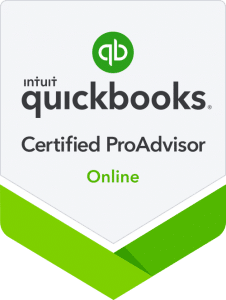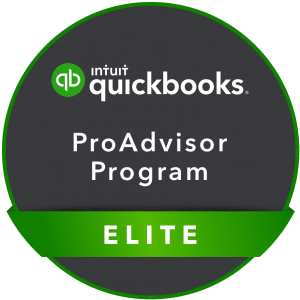When it comes to running a small business, one of the biggest day-to-day challenges is making sure you have enough cash on hand to keep everything moving. Paying vendors, covering payroll, and saving for upcoming expenses can quickly become stressful if the timing of income and bills doesn’t match up.
That’s where cash flow management plays a key role. It’s more than tracking what comes in and out. It’s about being able to predict, adjust, and plan so that you’re not left scrambling. Even businesses with great sales can hit a rough patch if payments are delayed, or if large expenses come before cash is in the bank.
The good news is you don’t need a finance degree to get it right. With a few habits and tools, you can create a solid game plan that helps keep your cash flow under control. Here are simple, actionable steps that can make a big difference.
Monitor Your Cash Flow Regularly
Keeping tabs on your cash flow helps you stay on top of your finances and avoid surprises. Whether your business is new or well-established, reviewing your numbers weekly or monthly lets you see where money is going and when you might hit a tight spot.
By looking at your current income and expenses regularly, you’ll catch issues early and make thoughtful adjustments. For example, noticing a dip in revenue one month gives you a chance to tighten spending before it becomes a serious issue.
There are many tools that can help. From spreadsheets to apps that link to your accounts, the options are wide. You’ll want a platform that offers real-time updates, invoice tracking, and easy-to-read reports. Some even send alerts when your balance drops below a set amount or when payments are overdue.
Your check-ins might include:
– Reviewing cash flow statements every week or month
– Monitoring unpaid invoices and upcoming bills
– Comparing earnings and expenses over several time periods
– Looking for signs of slowed revenue or rising costs
This habit builds awareness. Say, for example, you notice this month’s rent hits two days before a major client usually pays their invoice. That timing gap can throw things off. Spotting patterns helps you plan smarter and avoid shortfalls.
Create a Cash Flow Forecast
A good forecast doesn’t need to be complicated. Building a forecast is simply a way to peek into the near future of your business finances using the information you already have.
Start by listing the money you expect to come in — from client payments, retail sales, or other consistent sources. Then map out your fixed costs, such as rent, insurance, and software fees. Don’t forget variable costs like inventory restocks or seasonal expenses. When you lay these side by side on a monthly calendar or spreadsheet, it becomes easier to spot when shortfalls might happen.
Basic forecast setup includes:
1. Regular income (client payments, recurring sales)
2. Fixed expenses (rent, insurance, subscription fees)
3. Flexible or one-time costs (inventory, seasonal needs)
Update your forecast monthly, adjusting for any unexpected changes. Over time, patterns will emerge that make planning even easier. For instance, you might learn that winter months are slower, prompting you to reduce expenses in advance.
Having this prediction tool builds confidence. You’ll be able to pause new purchases, adjust payment schedules, or seek support in advance of financial crunches. It’s a helpful way to stay prepared and focused, rather than reactive and stressed.
Manage Receivables Effectively
If customers take too long to pay, it slows your ability to pay your own bills on time. Managing your receivables means getting paid quickly and setting up habits that improve the payment process.
First, make a routine of sending invoices immediately after a sale or service is completed. Delays in invoicing often lead to delays in payment. The sooner you bill, the sooner the money starts moving.
Maintaining a steady cash flow also means checking back in on unpaid invoices. A friendly reminder a few days after the due date can go a long way. Clients get busy too, and a nudge often helps.
Some businesses offer incentives for early payment. A small discount, even just a few dollars off, may encourage clients to pay as soon as they receive an invoice.
A few practices to keep receivables flowing:
– Send invoices promptly with clear terms
– Set deadlines and follow up on late payments
– Offer small discounts for early or on-time payments
Getting consistent with your receivables helps your business stay ready to cover expenses without using backup funds or delaying your own payments.
Control and Prioritize Expenses
Not every expense is necessary. When cash flow is tight or unpredictable, it helps to separate your spending into two categories: essential and non-essential.
Essential expenses are things your business can’t run without. Think rent, utilities, internet, and inventory. Non-essential expenses might include unused software subscriptions, paid memberships you rarely access, or excessive office supplies. These add up faster than most people think.
Look at your spending and highlight areas to cut without hurting productivity or customer service. Renegotiating with suppliers or vendors can also free up cash. Some may be open to extended payment terms or discounts for bulk orders.
Ways to manage expenses better:
– List and tag every business expense as necessary or optional
– Reduce or eliminate non-essential spending
– Contact vendors to ask about better pricing or more flexible terms
Even switching to energy-efficient lighting or using reusable supplies can lead to savings month to month. These small efforts protect your cash flow and keep resources focused where they’re needed most.
Build a Cash Reserve
Unplanned costs pop up more often than you think. A broken piece of equipment, sudden drop in sales, or late payment from a big client can throw things off. That’s why building a cash reserve can be a game changer.
Rather than waiting for a problem to occur and then scrambling for funds, a cash reserve acts like a business safety net. It lets you ride out slower months or cover surprise expenses without borrowing or missing payments.
Start small. Set aside a fixed portion of profits each month and move that money into a separate account that you don’t touch. As it grows, it becomes a cushion that gives you peace of mind and flexibility.
Steps to create a reserve:
– Choose a fixed percentage of your monthly profits to save
– Place savings into a separate business account
– Increase your savings amount over time based on cash flow
The goal is to build a few months’ worth of essential operating costs. That way, if things slow down or unexpected repairs are needed, your business can keep running smoothly.
Keeping Your Cash Flow Healthy
Improving cash flow often comes down to a few basic habits repeated over time. By keeping close watch on your finances, planning ahead with a forecast, invoicing promptly, cutting unnecessary costs, and building savings, you give your business room to breathe.
Staying flexible and learning as you go also makes a big difference. Each business has unique challenges, so it helps to review your numbers with fresh eyes regularly. Adjust your strategies as needed and get advice when things feel uncertain.
There’s no need to do it all alone. Working with professionals can make managing your cash flow much easier. Financial management services are a smart step for businesses looking to grow steadily and prepare for the future. Having guidance, insights, and accuracy in your bookkeeping helps you make better decisions and stay ahead of problems before they start.
Strengthening your cash flow is essential for every small business aiming for stability and growth. Cloud Bookkeeping is here to assist you in that journey with our expert financial management services. We provide the insights and tools you need to streamline your finances and confidently plan for a prosperous future. Let us help you make informed decisions that keep your business thriving.






